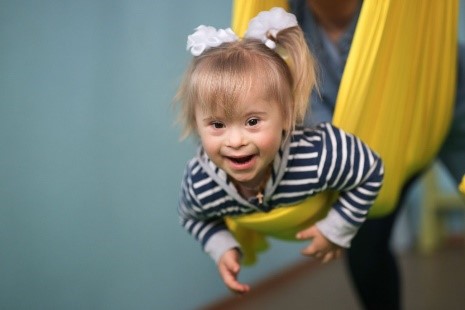
What comes to mind when you hear of this term? Many people have diverse ideas of occupational therapy; some suppose that occupational therapists help people get jobs or occupy children and adults. However, is that what it entails? No. As you read this article, you will gain the right idea of what it involves.

Let us start by knowing what occupational therapy is. According to the World Federation of Occupational therapy (WFOT), Occupational therapy (0T) is a client-centred health profession that promotes health and well being across the lifespan, from birth to old age, by engaging in meaningful and purposeful activities. These activities are what are referred to as occupations. Occupations are everything you do from the moment you wake up to when you go to sleep; be it bathing, eating, cooking, working, or even taking care of children. Now for children, their occupation is different from the adults; their occupation is engaging in play and going to school.

An occupational therapist helps an individual to do what he needs, wants, or is required to do. A Pediatric Occupational Therapist (POT) helps children do what they need or want to do. The POT works with children from birth to 18 years old, infants, toddlers, and adolescents. They help a child to engage in his/her occupation.
What Type Of Clients Does a Paediatric Occupational Therapist See?
A paediatric occupational therapist (POT) deals with children with the following conditions:
- Delayed Milestones
- Cerebral palsy
- Down syndrome
- Autism spectrum disorders (ASD)
- ADHD
- ADD
- Sensory Processing Disorders
- Dyspraxia
- Dyslexia
- Dyscalculia
- Intellectual disability
- Spina bifida
The paediatric occupational therapists focus is to improve the child’s quality of life and for the child to be independent in doing his or her daily activities and tasks.
What Skills Does a Paediatric Occupational Therapist Address?
Clinical Reasoning Skills
The POT conducts assessments to find out the child’s needs hence coming up with treatment plans to address the needs found. The POT breaks down activities/occupations into small parts and identifies the deficits to improve the child’s functioning at school, home, and play.
Problem-Solving Skills
While implementing the treatment plan, the therapist must match the various tasks to the specific child. Paediatric therapy services are child-centred and individualized.
Creativity
Children love fun, and therapy demands one to tap into their creative juices to make the sessions engaging.
How Does the Therapist Address the Needs of the Child?
When working with the child, the therapist majorly uses play as a means of treatment for the child. Doing so attracts the child’s interest, enabling the child to engage in the activities given and improving the treatment outcome.
Where Does a Paediatric Occupational Therapist Work?
A paediatric occupational therapist works in various settings.
- New-born unit: The therapist works with new-borns with diagnoses such as premature birth, low birth weight, and those who find it hard to breastfeed.
- In-patient settings: The therapists offer their services to those admitted.
- Outpatient settings: The therapists conduct consultations, assessments and schedule sessions daily.
- Natural environments: Schools and home settings are the children’s natural environments.
- Community setting: Therapists conduct outreach programs in the community setting. They offer workshops on the management and create awareness of the different conditions they work with.
- Refugee camps: The therapists provide services in the refugee camps. They train the refugees on how to take care of children with disabilities.
Summary
In a nutshell pediatric occupational therapy aims at improving the child’s quality of life and functionality. The child’s occupation (play) forms the basis of the treatment. This captures the child’s interests and helps the child to engage in activities. Occupational therapy addresses the deficits the child presents with and work on them. Occupational therapists work in different settings such as schools, hospitals, outpatient centres and in the community.
-
Next Post
Play in Occupational Therapy



